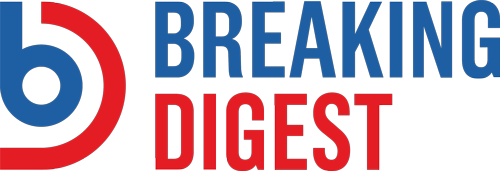
The projected GDP growth of 2.4% starkly contrasted with the disappointing actual increase of only 1.6%. These lower-than-expected growth numbers come amidst a backdrop of rising inflation.
Inflation rose to 3.7% in the first quarter, placing additional strain on consumers who are already struggling in the Biden economy.
Experts on Fox News Business highlighted the double threat of sluggish growth combined with persistent inflation, underscoring the Federal Reserve’s admission that inflation is not only “sticky” but also trending unfavorably. Economic analysts are sounding the alarm about the looming potential for stagflation, characterized by slow economic growth, high unemployment rates, and rising prices.
🇺🇸 US GDP growth slows to 1.6% annualized while core PCE prices accelerate to 3.7% annualized in Q1.
— Alex Joosten (@joosteninvestor) April 26, 2024
Chart: @Bloomberg pic.twitter.com/AFoYLrKuVD
Fox Business Network reported:
U.S. gross domestic product (GDP) dropped faster than expected in the first quarter, but a key metric used by the Federal Reserve to measure inflation kept rising, according to the Bureau of Economic Analysis (BEA).
Real GDP increased at an annual rate of 1.6% for the January-through-March period after rising 3.4% in the fourth quarter of 2023, according to the Bureau of Economic Analysis (BEA) advance estimate released Thursday. Economic forecasts had called for a deceleration of growth over the previous month, with the expectation that the economy would expand by 2.4%, according to a Reuters report.
Compared to the fourth quarter, the deceleration in real GDP in the first quarter primarily reflected decelerations in consumer spending, exports and state and local government spending and a downturn in federal government spending. This slowdown was partly offset by an acceleration in residential fixed investment…
…
The personal consumption expenditures (PCE) price index, excluding food and energy prices — a key metric the Federal Reserve tracks to measure inflation — increased by 3.7% after rising to 2% in the fourth quarter.
More from Zero Hedge:
Abysmal economic data released on Thursday painted a not-so-rosy picture for the US economy. In the last 3 post-pandemic years, nominal growth has been positive while quality of life has deteriorated behind the scenes of officially released data, and the latest data continues the trend.
GDP growth slowed from 3.4% to 1.6%—missing economist expectations by 90 basis points (0.9%). Not bad enough? Core PCE inflation has also accelerated (on a quarterly basis) from 2% to 3.7%. I wouldn’t weigh these numbers as gospel, since they are not yearly figures, but the fact remains that nominal growth is sputtering and consumer prices, the most sticky ones, are red hot:



